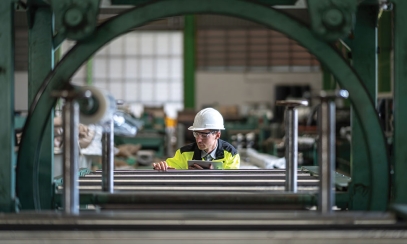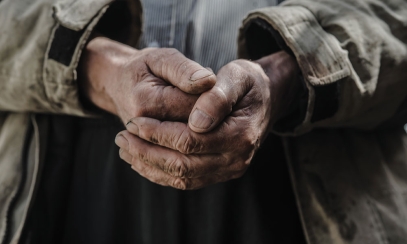Why Do We Do That at Mass?
The Order of the Mass
The Order of the Mass
In the middle of the second century, St. Justin Martyr wrote to Antonius Pius explaining what Christians do when they gather for worship:
“ … And on the day called Sunday, all who live in cities or in the country gather together in one place, and the memoirs of the apostles and the writings of the prophets are read, as long as time permits; then, when the reader has ceased, the president verbally instructs, and exhorts to the imitation of these good things. Then we all rise together and pray, and as we before said, when our prayer is ended, bread and wine are brought, and the president in like manner offers prayers and thanksgivings according to his ability, and the people assent, saying Amen; and there is distribution to each, and a participation of that over which thanks have been given, and to those who are absent a portion is sent by the deacons …” (First Apology Chapter 67 nos.3-5, trans. Lawrence Johnson).
Those practices should sound very familiar to us in the 21st century. For what St. Justin is describing is very similar to our present day Liturgy of the Word and Liturgy of the Eucharist.
A witness to unbroken tradition
Throughout church history, the structure of the Mass has undergone development from a variety of liturgical families, cultures and language groups, but we have steadfastly borne witness to an “unbroken tradition.” For example, when St. Pius V promulgated the Missal of the Council of Trent (1548-1563), he ordered that some rites be restored “to the original norm of the holy Fathers” (Quo primum, 1570) referring to writers of the Patristic Age.
Likewise, the bishops of the Second Vatican Council (1961-1965) built upon the Missal of Trent, this time aided by amazing discoveries of ancient church orders, fresh linguistic scholarship and research in liturgical history (cf. General Instruction of the Roman Missal 6-15). Among other things, they restored the Prayers of the Faithful, embraced a fuller treasury of Scripture readings, added eucharistic prayers based on ancient anaphoras and restored the use of vernacular languages while preserving the use of Latin.
In the next few years, we will see a new English translation of some of the texts we use at Mass, but the Order of Mass will stay the same. In future articles, we will examine each part of the Mass and the upcoming changes in the texts of prayers, but this issue will simply look at the current structure.
The Order of Mass – an integrated whole
It helps now and then to step back and see how the Mass flows from ritual element to ritual element and how those parts make up a cohesive whole.
“The Mass is made up … of two parts: the Liturgy of the Word and the Liturgy of the Eucharist. These, however, are so closely interconnected that they form but one single act of worship. For in the Mass, the table both of Christ’s word and of Christ’s Body is prepared, from which the faithful may be instructed and refreshed. There also are certain rites which open and conclude the celebration” (GIRM 28).
The purpose of the Introductory Rites “is to ensure that the faithful who come together as one establish communion and dispose themselves properly to God’s word and to celebrate the Eucharistic worthily” (GIRM 46). Even the procession of the presider and other ministers through the assembly, as we sing the opening hymn, is an act of gathering. We begin with the sign of the cross, recall our sins or the waters of baptism and sing the ancient hymn of praise, the Glory to God. The opening prayer (also called the collect since it “collects” all our prayers) sets the character for the whole celebration.
On Sundays and festive days, the main parts of the Liturgy of the Word are the three readings and the chants between them – one from the Old Testament (except during the Easter season), one from the New Testament and one from the Gospels. Next, the homily explains the readings and relates God’s living word to our daily lives. We affirm our adherence to the Word by means of the profession of faith (cf. GIRM 55). Finally, we offer our petitions in the prayers of the faithful, praying for ourselves and the whole world.
At the Last Supper, Christ instituted the Eucharist by which his sacrifice on the cross is continuously made present. He took the bread and wine, gave thanks, broke the bread and gave it to his disciples. In his memory, we continue to take, bless, break and give in the Liturgy of the Eucharist. In the preparation of the gifts and the altar the priest receives our gifts of bread and wine. In our great prayer of thanksgiving – the Eucharistic Prayer – we offer God thanks and the simple gifts become the body and blood of Christ. In the fraction rite (while we chant the Lamb of God) we break the bread. And in the distribution of Communion, we receive from one bread and one cup.
Some of you may remember the old formula of the Mass, ite missa est – “Go, it is the sending.” From that word “missa” we get dismissal and mission. From that word missa we get Mass. In our brief, yet profound, Concluding Rite we are still blessed and dismissed so that, nourished by word and sacrament, we may go out and tell the good news of our salvation.
Pilgrimage destination of the month: Tepeyac, Mexico
Every year, Catholics from around the globe travel to religiously significant locations in order to deepen their understanding and appreciation for the Catholic faith, to venerate Mary and the saints, to ask for intercessory prayers and to express gratitude. Here is just one of the many places you might want to make a pilgrimage.
Tepeyac, or the Hill of Tepeyac, is located in Mexico City. It is the site where the Virgin of Guadalupe appeared to Saint Juan Diego in 1531. Believed to have been a pre-Columbian worship site for the mother goddess, Tonantzin, it has become one of the most popular pilgrimage sites for Catholics as millions visit each year to view the tilma of Juan Diego that bears the image of Our Lady of Guadalupe, especially around her feast day of December 12.
Notables:
The Basilica of Our Lady of Guadalupe houses the original tilma of Juan Diego. It was built by the same Mexican architect who designed the Estadio Azteca. Because of the number pilgrims that visit the Basilica each year, it is considered second only to Vatican City in terms of sanctuaries important to Catholicism. It can seat 10,000 people with temporary seating available for up to 40,000.
The order of Mass of Paul VI
Introductory Rites
• Opening Hymn
• Greeting
• Penitential Rite (or Sprinkling Rite)
• Glory to God
• Opening Prayer (or Collect)
Liturgy of the Word
• First Reading
• Responsorial Psalm
• Second Reading
• Gospel Acclamation
• Gospel
• Homily
• Profession of Faith
• General Intercessions
Liturgy of the Eucharist
• Preparation of the Altar and the Gifts
• Presentation Hymn
• Prayer Over the Gifts
• Eucharistic Prayer
Thanksgiving
Acclamation(s)
Epiclesis
Institution Narrative and Consecration
Anamnesis
Offering
Intercessions
Final Doxology
• Lord’s Prayer
• Sign of Peace
• Invitation to Communion
• Communion Procession [and Communion Hymn(s)]
• Prayer after Communion
Concluding Rites
• [Announcements]
• Greeting
• Blessing
• Dismissal
• [Closing Hymn]



